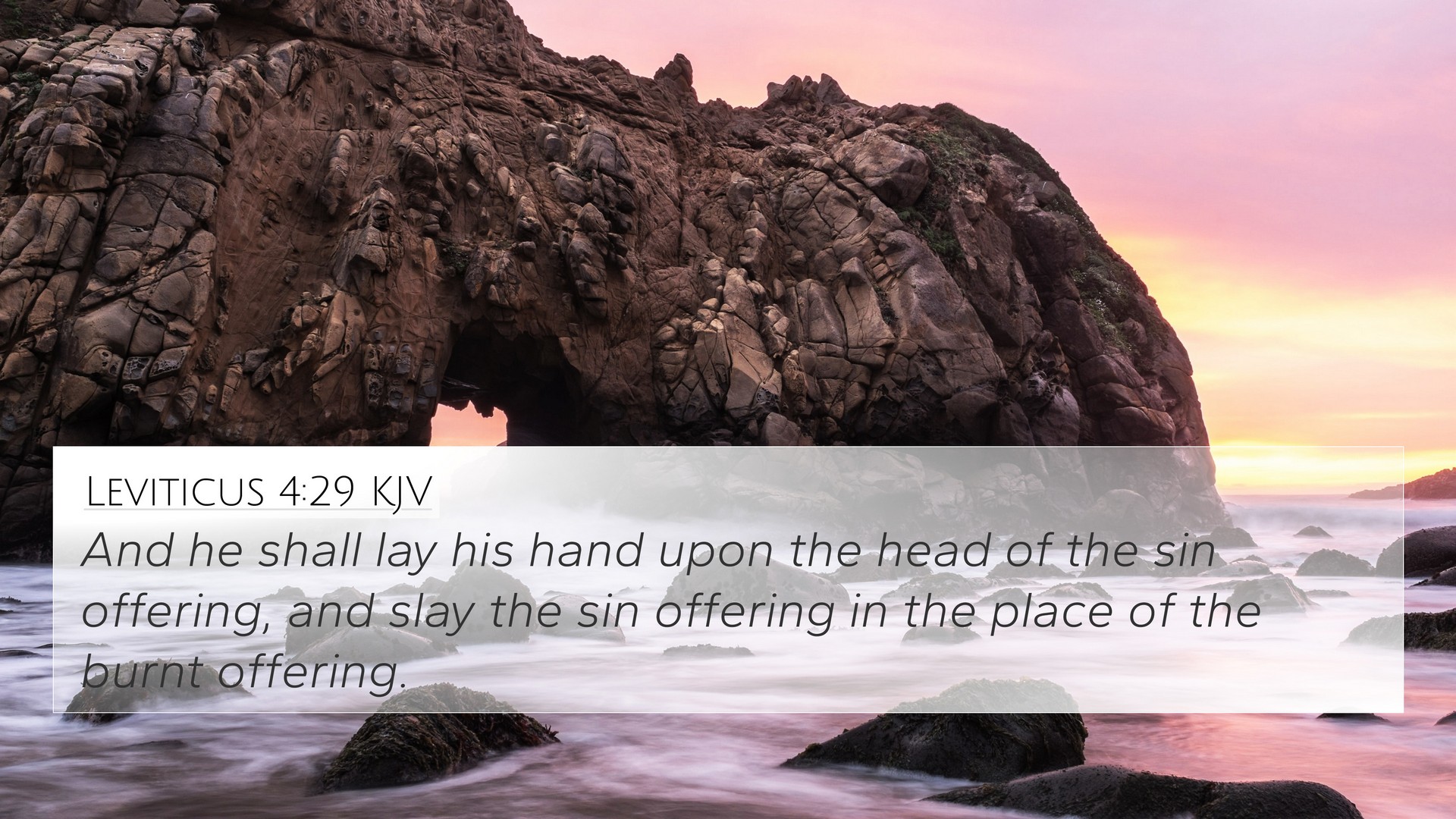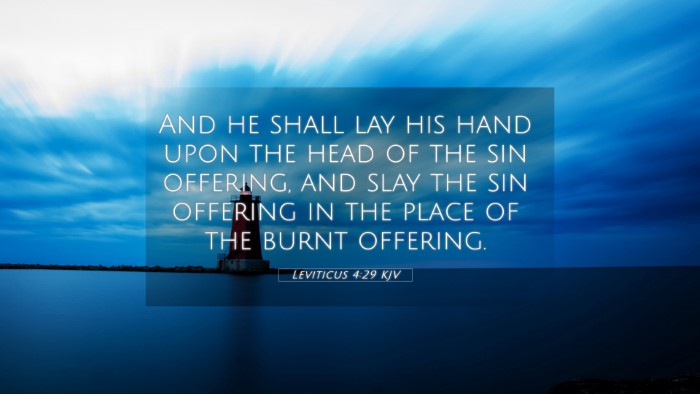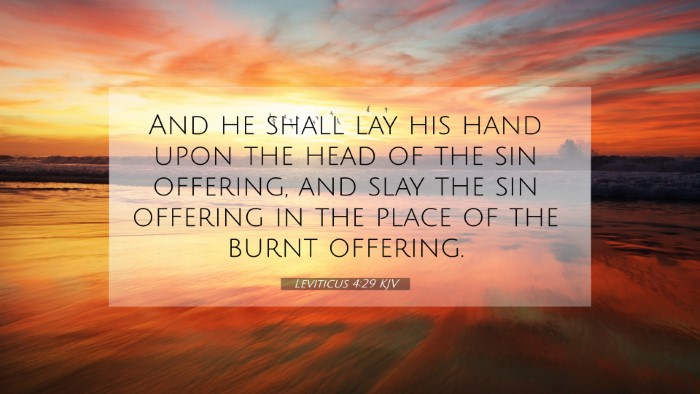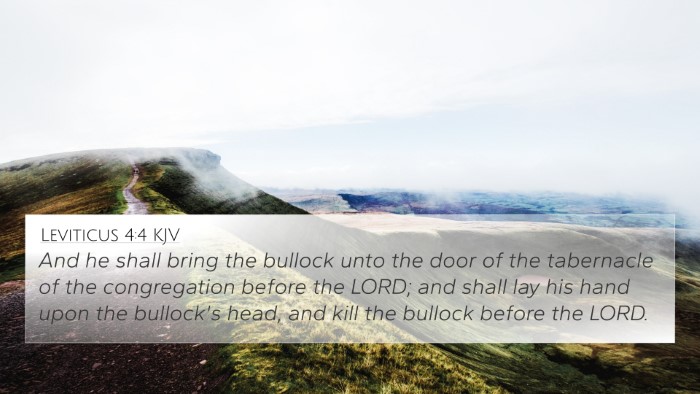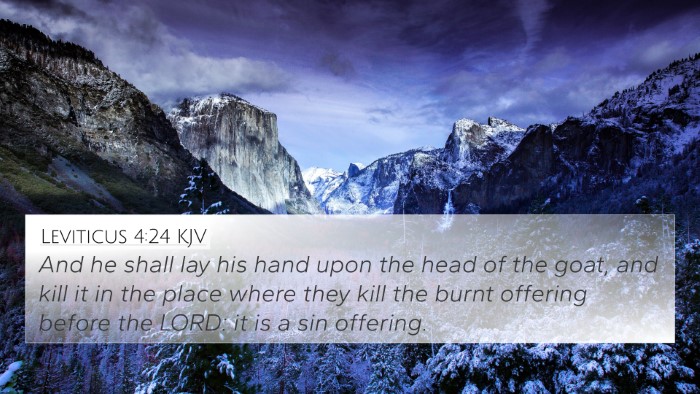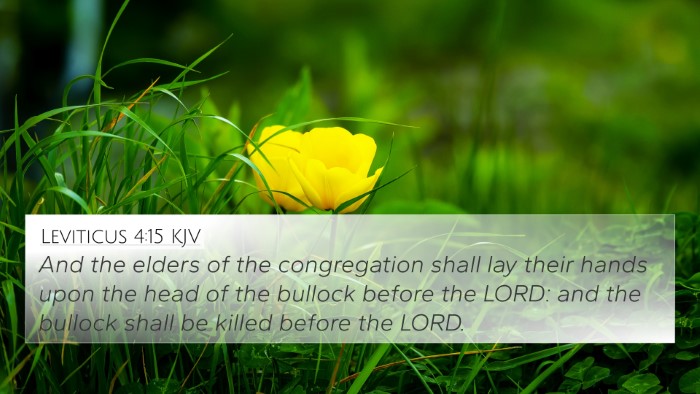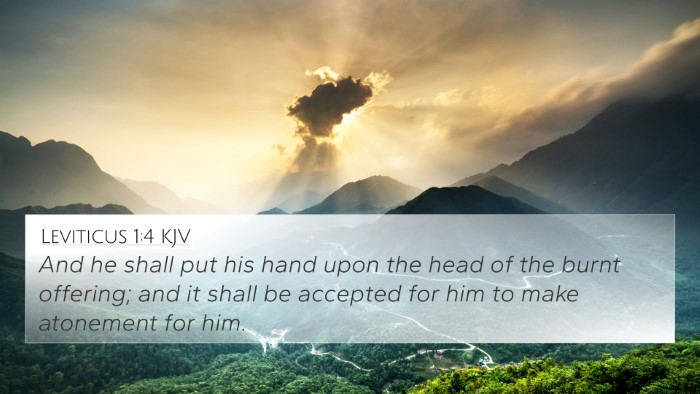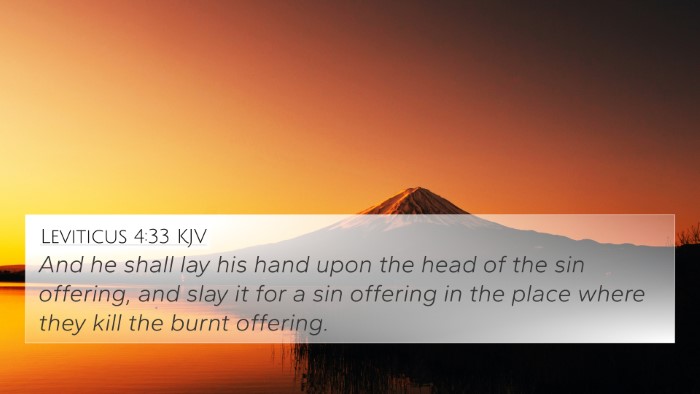Understanding Leviticus 4:29
Leviticus 4:29 presents instructions regarding sin offerings in the context of atonement. The Hebrew concept of sin permeates the teachings of the Old Testament, where unintentional sins required specific sacrifices to restore the offender's relationship with God.
Verse Text
Leviticus 4:29: "And he shall lay his hand upon the head of the sin offering, and slay the sin offering in the place of the burnt offering."
Summary of Meaning
The emotion behind this act is symbolic. By laying hands on the offering, the sinner identifies with the sacrifice, transferring their guilt onto the animal. This highlights God's grace and provision, allowing for reconciliation through substitutionary atonement.
Commentary Insights
- Matthew Henry: Henry underscores the significance of the imposition of hands as a means of confessing sin and seeking forgiveness. He notes the importance of understanding this act as a symbolic gesture of faith and dependence on God’s mercy.
- Albert Barnes: Barnes draws attention to the procedural elements of the sacrifice. He highlights the need for the community to engage in this act, emphasizing communal responsibility towards maintaining a right relationship with God. He also links this verse to the overarching theme of atonement found throughout Scripture.
- Adam Clarke: Clarke adds depth by discussing the ritual’s necessity for spiritual awareness among the people. He believes these laws were designed to keep the Israelites mindful of their sinfulness and the means of atonement available through God’s statutes.
Key Thematic Connections
Leviticus 4:29 can be cross-referenced with several scriptures to deepen understanding:
- Exodus 29:10-14: Discusses the procedure of the sin offering.
- Hebrews 9:22: “Without the shedding of blood, there is no remission.” This New Testament parallel sheds light on the necessity of blood as an atonement for sins.
- Isaiah 53:6: Prophetic link to the suffering servant who bears our iniquities.
- 1 Peter 2:24: Points to Christ being our sin offering and bearing our sins on the cross.
- Leviticus 16:21: Relates to the scapegoat, emphasizing the concept of sin being transferred to another.
- Romans 3:25: Elaborates on how Jesus is our propitiation, echoing the need for sacrifice for sin.
- John 1:29: John the Baptist refers to Jesus as the Lamb of God who takes away the sins of the world, fulfilling the sacrificial system established in Leviticus.
Exegetical Insights
Examining this verse allows for a variety of applications, especially in the context of inter-Biblical dialogue and thematic exploration. It connects the Old Testament sacrificial system to the ultimate sacrifice of Jesus, revealing a continuous thread of divine provision for sin throughout Scripture.
Practical Applications
The teachings from Leviticus encourage believers to:
- Reflect on personal sin and the need for atonement.
- Appreciate the significance of Jesus as the fulfillment of the sacrificial system.
- Engage in self-examination during periods of worship, recognizing the importance of confessing one's sins to maintain a pure heart before God.
Conclusion
Leviticus 4:29 serves as a pivotal verse connecting the themes of sin, sacrifice, and atonement. By engaging with cross-references, we see the fullness of God's redemptive plan that culminates in Christ's ultimate sacrifice. Studying these connections enhances our understanding of the scriptures and strengthens our faith.
